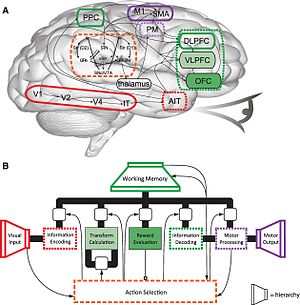 Information is unstructured, especially when it is en masse (think, for instance, the Internet). The amount of available content is doubling every 5 years, and we just don't have the time or the cognitive capacity to keep up with everything.
Information is unstructured, especially when it is en masse (think, for instance, the Internet). The amount of available content is doubling every 5 years, and we just don't have the time or the cognitive capacity to keep up with everything.People have amazing ideas, but the computational abilities are often not ready. "At the core we are trying to leverage knowledge the way humans record and communicate in natural human language in a a particular text" (video below), to the point where there is a natural interaction between humans and computers". Ideally, cognitive computing systems expand the boundaries of human cognition and get smarter with use, providing complex information processing systems, able to acquire information, collate and act on it, and transmit it as knowledge.
For example, healthcare. In healthcare cognitive computing can become a "support tool to expand the physicians cognitive boundaries by giving them deeper access to much larger volumes of [selected, filtered, organised] information" (video below). In other words, we are leveraging the computer's ability to keep up with huge volumes of data. Using semantic analysis to recognise patterns the computer is able to understand the knowledge contained within the data, so that it can be applied to the problem that the physician is trying to solve, and give different alternatives, while also providing evidence that supports those alternatives (evidence exploration). The key here is that we are "adapting the computer technology to work better with the way humans want to work so it's a more natural relationship between the human and computer" (video below).
A useful visual introduction cognitive computing, the video (2 mins 6 secs) below, Eric Brown (IBM Research) provides a brief overview referring in particular to Watson. For a much deeper overview, have a read of What is cognitive computing ? IBM Watson as an example.
Image: Simplified diagram of Spaun, a 2.5-million-neuron computational model of the brain. Public domain licensed Wikimedia Commons image by Chris Eliasmith: https://en.wikipedia.org/wiki/File:Architecture_of_Spaun.jpeg





No comments:
Post a Comment